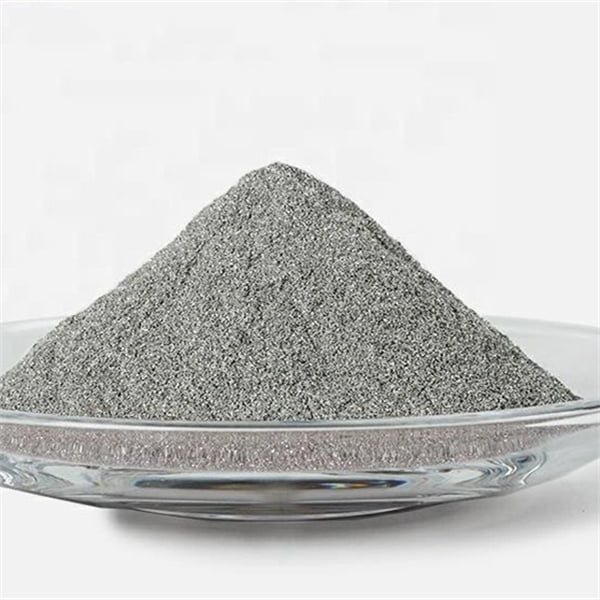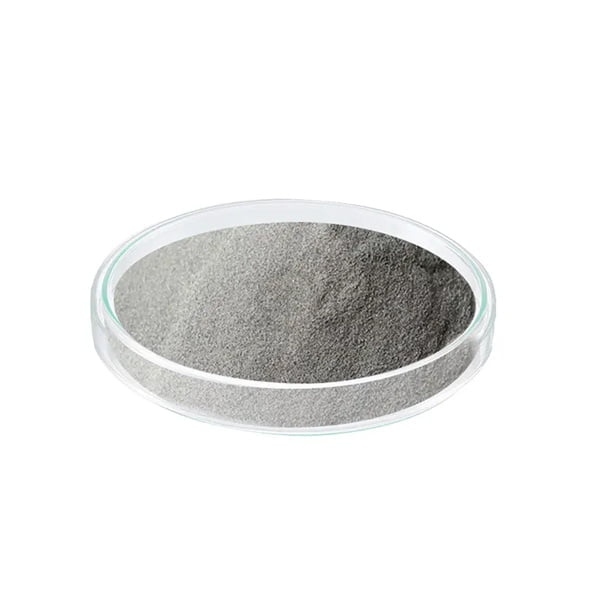Prášek z nerezové oceli
Obsah
Prášek z nerezové oceli je všestranný materiál s využitím v mnoha průmyslových odvětvích. Tento komplexní průvodce poskytuje podrobné informace o různých aspektech práškové nerezové oceli, které vám pomohou porozumět tomuto materiálu.
Přehled práškové nerezové oceli
Prášek z nerezové oceli se vyrábí z nerezové oceli, která byla rozdrcena na jemný prášek. Vykazuje podobné vlastnosti jako nerezová ocel, včetně vysoké pevnosti, trvanlivosti, odolnosti proti korozi a univerzálnosti. Mezi klíčové vlastnosti a charakteristiky patří:
Vlastnosti:
- Vysoká pevnost a tvrdost
- Vynikající odolnost proti korozi
- Dobrá odolnost proti opotřebení a oděru
- Všestrannost - lze použít v různých aplikacích
- Schopnost spékání do dílů
Charakteristika:
- Forma jemného prášku s velikostí částic od 1 mikronu do 150 mikronů
- K dispozici jsou různé jakosti, včetně 304, 316, 410 a 430.
- Složení obsahuje železo, chrom, nikl, molybden, mangan.
- Prášek lze smíchat s jinými prášky, jako je bronz, měď.
Typické aplikace:
- Výroba průmyslových dílů vstřikováním kovů a dalšími technikami práškové metalurgie.
- Výroba filtrů z nerezové oceli
- Výroba diamantových nástrojů
- Prášky pro 3D tisk
- Pájecí pasty a svařovací prášky

Horní Prášek z nerezové oceli Dodavatelé
Existuje mnoho renomovaných dodavatelů, kteří poskytují kvalitní prášky z nerezové oceli. Mezi nejlepší výrobce a prodejce prášků z nerezové oceli patří:
| Společnost | Umístění | Nabízené třídy |
|---|---|---|
| Sandvik | Švédsko | 304L, 316L, 17-4PH, zakázkové třídy |
| Höganäs | Švédsko | 316L, 17-4PH, zakázkové třídy |
| Skupina CNPC Powder | Čína | 304, 316L, 410, zakázkové třídy |
| Daido Steel | Japonsko | 430, 304L, 316L |
| Práškové kovy ATI | USA | 304L, 316L, zakázkové třídy |
| Pometon SpA | Itálie | 304L, 316L, 430L |
Tyto společnosti nabízejí prášky z nerezové oceli v různých běžných třídách, jako jsou 304, 316, 430, 410, a také slitiny na míru. Mají rozsáhlé zkušenosti a pokročilé výrobní postupy, které zajišťují vysokou kvalitu prášků.
Velikosti prášku z nerezové oceli
Prášky z nerezové oceli jsou k dispozici v široké škále velikostí částic pro různé aplikace. Některé běžné velikosti zahrnují:
| Rozsah velikostí | Typická použití |
|---|---|
| 1- 10 mikronů | Prášky pro 3D tisk, pájecí pasty |
| 10-44 mikronů | Vstřikování kovů |
| 44-150 mikronů | Konvenční lisování a slinování práškové metalurgie |
| 150-250 mikronů | Předlegované prášky lisované za tepla izostatickým lisováním |
Jemnější prášky zajišťují lepší slinování, dobrou povrchovou úpravu a mechanické vlastnosti. Hrubší částice umožňují rychlejší tisk, ale horší rozlišení dílů. Volba závisí na vyvážení klíčových požadavků aplikace.
Metody výroby prášku z nerezové oceli
Prášky z nerezové oceli se komerčně vyrábějí pomocí následujících pokročilých metod, které umožňují přesnou kontrolu distribuce velikosti a tvaru:
| Metoda | Popis |
|---|---|
| Atomizace plynu | Roztavená ocel se rozkládá vysokotlakými plynovými proudy, čímž vzniká sférický prášek. |
| Atomizace vody | Používá vodní paprsky k rozbití roztaveného kovu na nepravidelný prášek. |
| Mechanické frézování | Prášky drcené/mleté z malých nerezových kousků |
| Elektrolýza | Anodické rozpouštění slitiny na prášek a katodové usazeniny |
| Sféroidizace plazmy | Nepravidelné prášky jsou přetaveny do kulovitého tvaru. |
Prášky atomizované plynem mají nejkulatější morfologii ideální pro aditivní výrobu, zatímco prášky atomizované vodou a frézované prášky mají nepravidelnější tvary. Následné zpracování, jako je žíhání, klasifikace a plazmová úprava, se provádí za účelem získání prášků přizpůsobených potřebám aplikace.
Aplikace a použití práškové nerezové oceli
Prášek z nerezové oceli získal díky svým vynikajícím vlastnostem obrovské využití v různých průmyslových odvětvích. Mezi hlavní oblasti použití patří:
| Průmysl | Aplikace |
|---|---|
| Automobilový průmysl | Součásti motoru a převodovky, čerpadla, ventily |
| Aerospace | Lopatky turbíny, části podvozku |
| Lékařský | Chirurgické nástroje, implantáty |
| Námořní | Čerpadla, vrtulové hřídele |
| Ropa a plyn | Ventily, součásti ústí vrtu |
| Průmyslový | Potrubí, tvarovky, filtry, ložiska |
Prášek z nerezové oceli se nejvíce používá pro výrobu malých složitých dílů v automobilovém průmyslu, dále v leteckém průmyslu a zdravotnických zařízeních. Průmyslová odvětví vyžadují díly odolné proti korozi a s vysokou pevností, které prášková nerezová ocel může poskytnout díky moderním výrobním postupům.
Výrobní procesy s použitím práškové nerezové oceli
- Vstřikování kovů (MIM): Nejběžnější proces práškové metalurgie, při němž se prášek z nerezové oceli mísí s pojivy, formuje a následně spéká, aby se ve velkých objemech vyráběly malé, složité díly, jako jsou ozubená kola.
- Aditivní výroba: Selektivní laserové tavení, tavení elektronovým paprskem a tryskání pojiva 3D tisk dílů z práškové nerezové oceli spojováním částic po vrstvách. Umožňuje vytvářet složité geometrie.
- Izostatické lisování za tepla (HIP): Teplem a tlakem dochází ke konsolidaci a zhutnění práškových forem z nerezové oceli do plně hustých funkčních dílů. Tento proces se používá u filtrů a ložisek.
- Zhutňování za studena/tepla: Jednoduché lisování prášku do tvaru s následným spékáním pro výrobu filtrů, magnetů a konstrukčních dílů.
Prášek z nerezové oceli Průvodce výrobou dílů
Výroba vysoce kvalitních dílů z nerezové oceli z prášku vyžaduje systematické plánování a provádění. Níže je uveden obecný rámec:
I. Finalizace požadavků
- Rozměry dílů, tolerance, specifikace povrchové úpravy
- Očekávané mechanické vlastnosti - tvrdost, pevnost, houževnatost
- Výrobní množství
- Hodnocení rozpočtu
II. Návrh a simulace
- Model CAD optimalizovaný pro výrobu
- FEA, CFD analýza modelů při pracovním zatížení s použitím skutečných materiálových dat
- Úpravy návrhu na základě zpětné vazby z analýzy
III. Výroba prototypů
- Výroba prototypových dílů stejným postupem jako finálních dílů.
- Umožňuje ověřování modelů CAD, analytických dat a výkonnosti procesů.
IV. Pořizování práškového materiálu
- Výběr třídy - 304 vs 316 vs 17-4PH na základě odolnosti proti korozi, teplotních potřeb
- Požadované vlastnosti prášku - rozsah velikosti částic, morfologie, úroveň čistoty
- Získávání renomovaných výrobců, jako jsou Sandvik, Höganäs a další.
V. Výroba dílů
- Volba parametrů - hutnicí tlak, teplotní profily, uspořádání stavby
- Použitá přesná zařízení - CNC lisy, 3D tiskárny, vakuové spékací pece
- následné zpracování - tepelné zpracování, povrchová úprava
VI. Testování a ověřování dílů
- Měření - rozměry, drsnost povrchu, pórovitost
- Mechanické zkoušky - tah, tvrdost, rázová houževnatost, únava
- Zkoušky koroze - solná mlha, vystavení chemickým látkám
- Revize procesu na základě výsledků
VII. Výroba v plném rozsahu
- Sériová výroba po potvrzení způsobilosti a kontroly procesu
- Průběžná kontrola a testování pro zajištění kvality
- Zvažte automatizaci pro snížení nákladů při vyšších množstvích
Jak si vybrat spolehlivého dodavatele prášku z nerezové oceli
Výběr kvalitního dodavatele prášku z nerezové oceli je pro úspěch výroby dílů zásadní. Mezi klíčová kritéria výběru patří:
1. Možnosti třídění: Široká nabídka - 304, 316L, 17-4PH, 420, slitiny na zakázku
2. Normy kvality: Certifikace ISO 9001, přísná chemická kontrola, kontrola zrnitosti
3. Odběr vzorků: Poskytování bezplatných testovacích vzorků pro měření kvality
4. Konzistence: Zajištění jednotnosti jednotlivých šarží v průběhu let
5. Technická podpora: Odborníci na prášek pro poradenství ohledně požadavků na aplikaci
6. Zákaznický servis: Reakce na dotazy a včasné dodání
7. Spravedlivé ceny: Přiměřená cena vzhledem k nabízené hodnotě
8. Dědictví: Dlouhá léta v oboru signalizují spolehlivost a osvědčené postupy
Výběr dodavatelů na základě podávaných kovů, politiky odběru vzorků, rychlosti reakce a dodacích lhůt. Upřednostněte společnosti s certifikátem ISO, které provádějí přísnou kontrolu kvality a metalografii. Dávejte přednost větším, renomovaným výrobcům, jako jsou Sandvik, Höganäs, před nespolehlivými zástupci nebo obchodníky.
Rozpis nákladů na prášek z nerezové oceli
Stejně jako u jiných slitin závisí cena na níže uvedených faktorech:
| Hnací síly nákladů | Podrobnosti |
|---|---|
| 1. Třída | 316L > 17-4PH > 304. Více niklu/chromu znamená vyšší náklady. |
| 2. Velikost částic | Ultrajemné prášky < 10 μm nejdražší |
| 3. Morfologie | Sférické > nepravidelné. Nejdražší atomizace plynu |
| 4. Úrovně čistoty | Prášky vyšší čistoty používané ve zdravotnických prostředcích jsou dražší |
| 5. Objednané množství | Jednotková cena se snižuje při množství nad 500 kg díky úsporám z rozsahu. |
| 6. Pomocné zpracování | Dodatečné žíhání, prosévání atd. zvyšuje cenu prášku |
Cenové rozpětí: $5/kg - $60/kg
Pro výrobu prototypů se doporučuje před hromadným nákupem objednat menší vzorky o hmotnosti 5-10 kg k otestování. Platební podmínky jsou také poměrně flexibilní - zajištěné LC, TT, Paypal.
Výhody a omezení práškové nerezové oceli
Výhody
- Vynikající odolnost proti korozi
- Vysoký poměr pevnosti a hmotnosti
- Dobrá odolnost proti opotřebení
- Výroba složitých dílů ve tvaru sítě
- Možnost použití vlastních tříd slitin
- Vhodné pro extrémní prostředí
Omezení
- Vysoké náklady na materiál oproti běžné oceli
- Nižší tažnost než u tepaných slitin
- Speciální zacházení, aby se zabránilo oxidaci
- Kvalifikovaný personál a nákladné vybavení potřebné pro zpracování dílů
S neustálým metalurgickým pokrokem bude prášková nerezová ocel v budoucnu otevírat nové možnosti použití.
Prášek z nerezové oceli Trendy a výhled odvětví
Klíčové trendy formující poptávku po prášcích z nerezové oceli:
- Rostoucí využití 3D tisku v leteckém a lékařském průmyslu
- Odlehčování automobilů je hnací silou zavádění komponent MIM
- Poptávka po výkonnějších slitinách ze strany ropného a plynárenského sektoru
- S. Korejský a čínský trh roste o více než 12% ročně
Prognózy odvětví naznačují zdravý růst CAGR 6-8% díky rostoucímu využití v aditivní výrobě kovů. Největší výrobci kovových prášků investují do rozšiřování kapacit, aby do budoucna pokryli objemy prodeje.

FAQ
Otázka: Jaký rozsah velikosti částic se nejlépe hodí pro vstřikování prášku z nerezové oceli?
Odpověď: Prášky o velikosti 10-25 mikronů představují dobrý kompromis mezi spékavostí, tvarovatelností a rozumnou cenou pro aplikace vstřikování kovů z nerezové oceli.
Otázka: Má na prášek z nerezové oceli vliv vlhkost nebo skladovací podmínky?
Odpověď: Ano, nerezová ocel při vystavení atmosférické vlhkosti za zvýšených teplot snadno oxiduje. Pro balení a skladování prášků v klimatizovaných skladech při teplotách pod 30 C je třeba používat vhodné suché nádoby uzavřené inertním plynem, aby se zabránilo jejich znehodnocení.
Otázka: Jaká je typická hustota dosažená po spékání prášku z nerezové oceli 316L?
Odpověď: Práškové kompakty 316L mohou dosáhnout teoretické hustoty přes 92% při vakuovém spékání při vysokých teplotách kolem 1350 C. Vyšší hustoty před spékáním nad 65% poskytují lepší konečné hustoty po odstranění pórů.
Otázka: Lze prášky z nerezové oceli míchat s jinými prášky?
Odpověď: Ano, pro úpravu fyzikálních, funkčních nebo ekonomických vlastností lze prášky z nerezové oceli kombinovat s jinými prášky, jako je bronz, kobaltové slitiny, tvrdé fáze, jako je karbid wolframu, v různých procentech pomocí vysokoenergetických mísicích systémů.
Otázka: Vyžaduje prášek z nerezové oceli po spékání nějaké další zpracování?
Odpověď: U některých aplikací lze po spékání provést tepelné úpravy, jako je žíhání v roztoku nebo stárnutí, aby se upravila tvrdost, houževnatost a další mechanické vlastnosti podle specifikací dílu. Kromě toho mohou povrchové operace, jako je broušení nebo obrábění, zvýšit přesnost, kvalitu povrchu a rozměrovou přesnost.
Sdílet na
MET3DP Technology Co., LTD je předním poskytovatelem řešení aditivní výroby se sídlem v Qingdao v Číně. Naše společnost se specializuje na zařízení pro 3D tisk a vysoce výkonné kovové prášky pro průmyslové aplikace.
Dotaz k získání nejlepší ceny a přizpůsobeného řešení pro vaše podnikání!
Související články

Vysoce výkonné segmenty lopatek trysek: Revoluce v účinnosti turbín díky 3D tisku z kovu
Přečtěte si více "O Met3DP
Nedávná aktualizace
Náš produkt
KONTAKTUJTE NÁS
Nějaké otázky? Pošlete nám zprávu hned teď! Po obdržení vaší zprávy obsloužíme vaši žádost s celým týmem.

Kovové prášky pro 3D tisk a aditivní výrobu
SPOLEČNOST
PRODUKT
kontaktní informace
- Město Qingdao, Shandong, Čína
- [email protected]
- [email protected]
- +86 19116340731
















